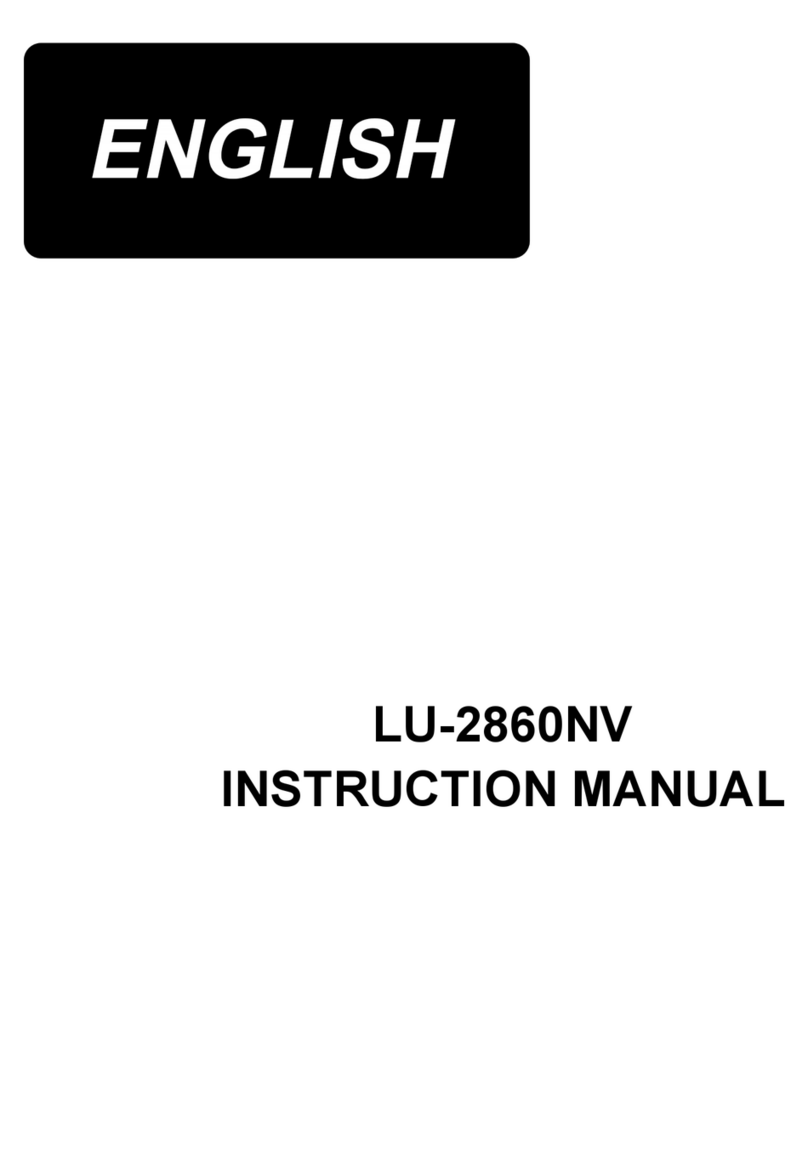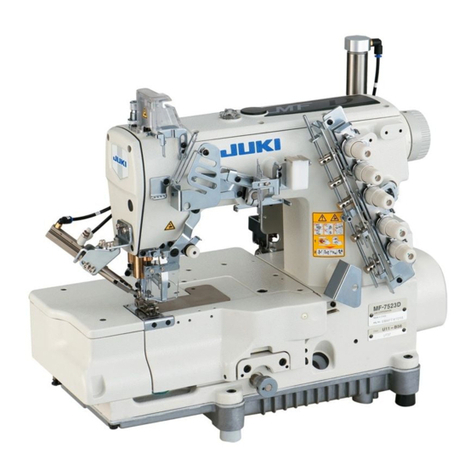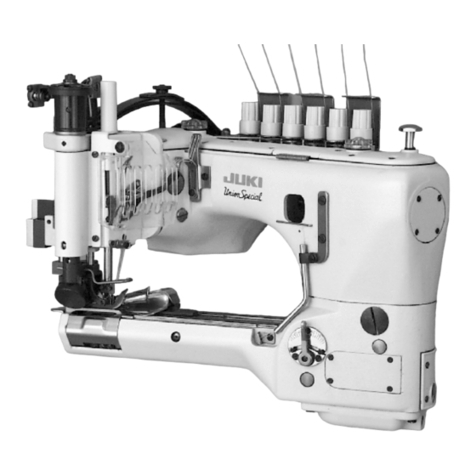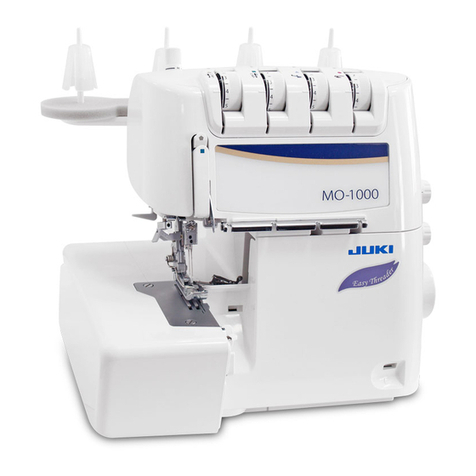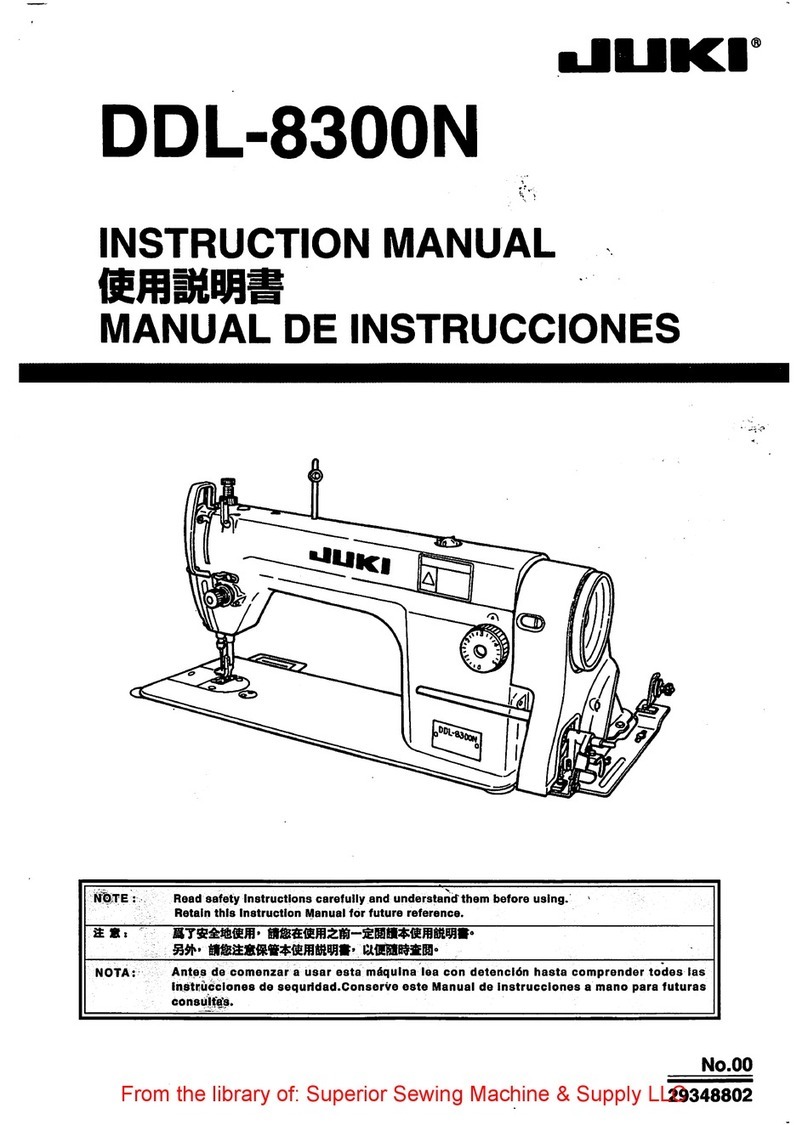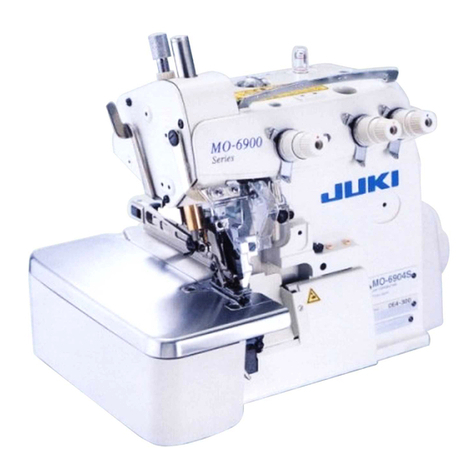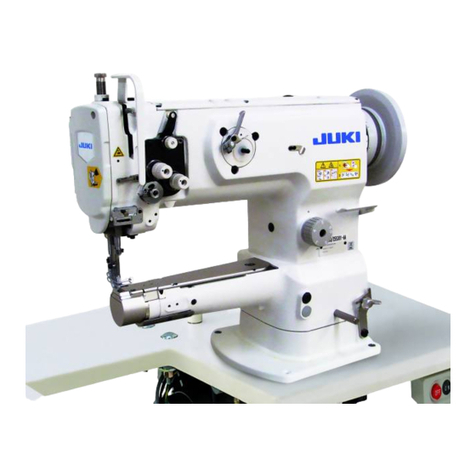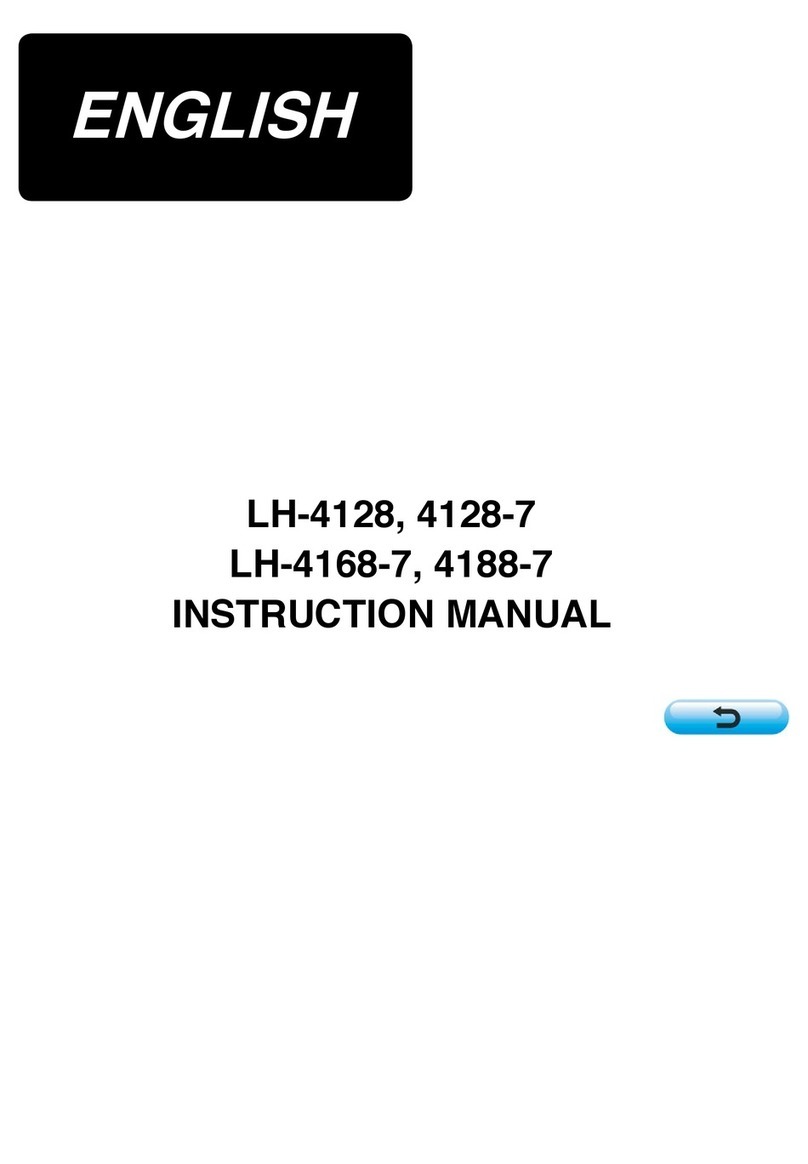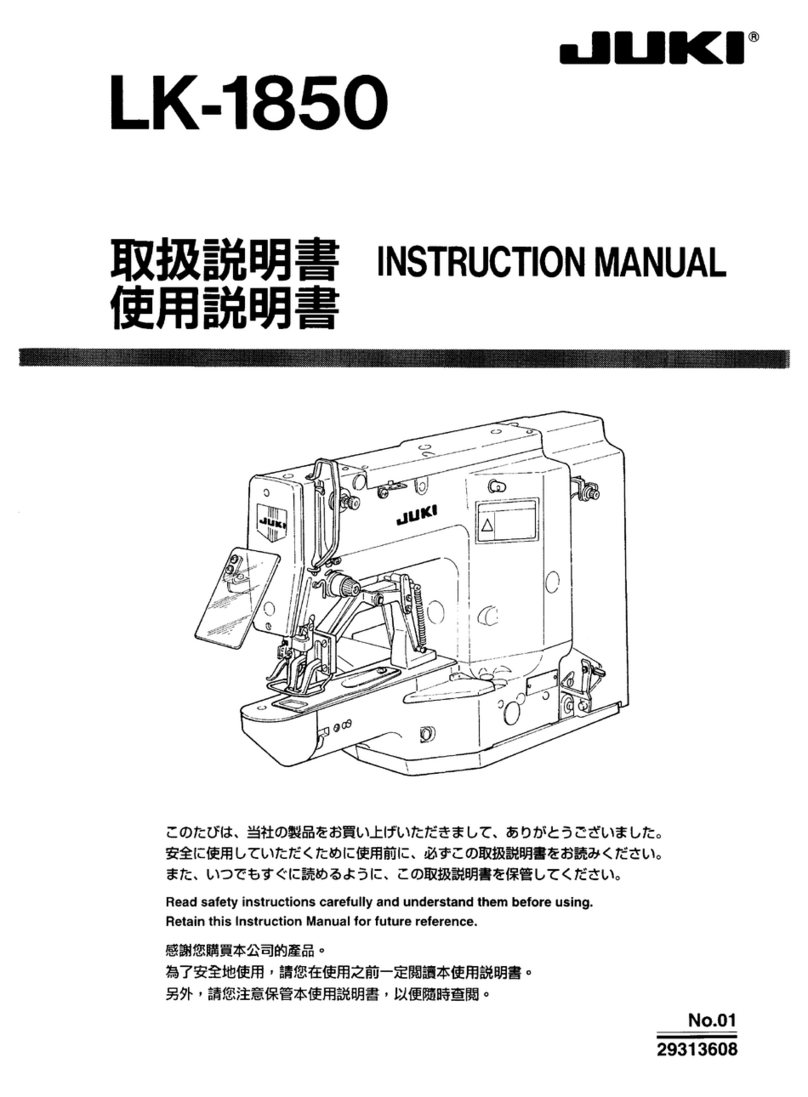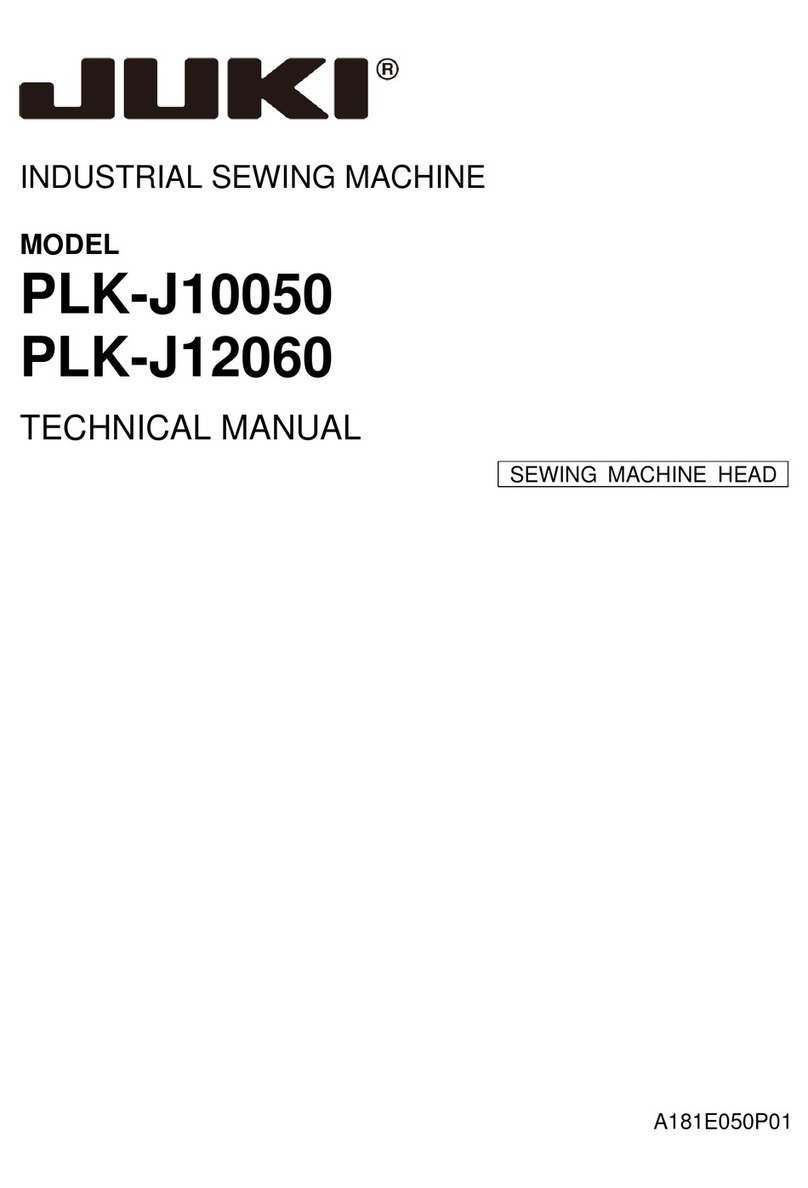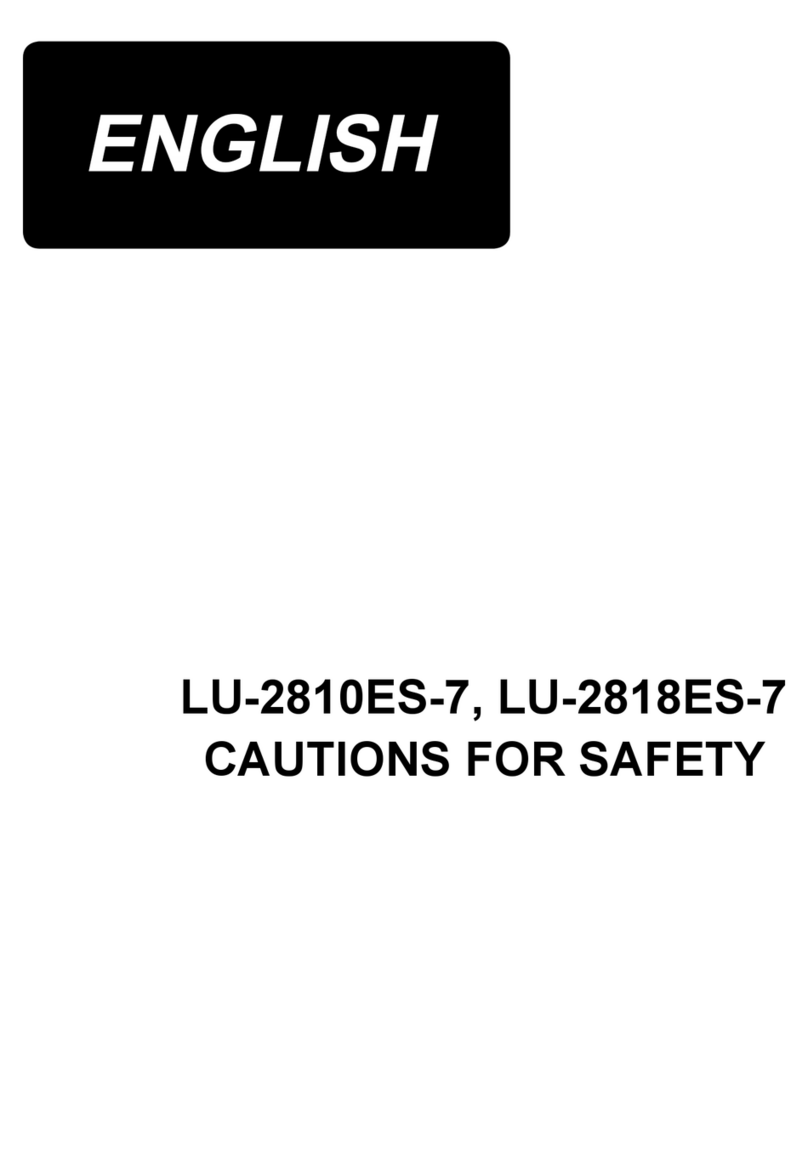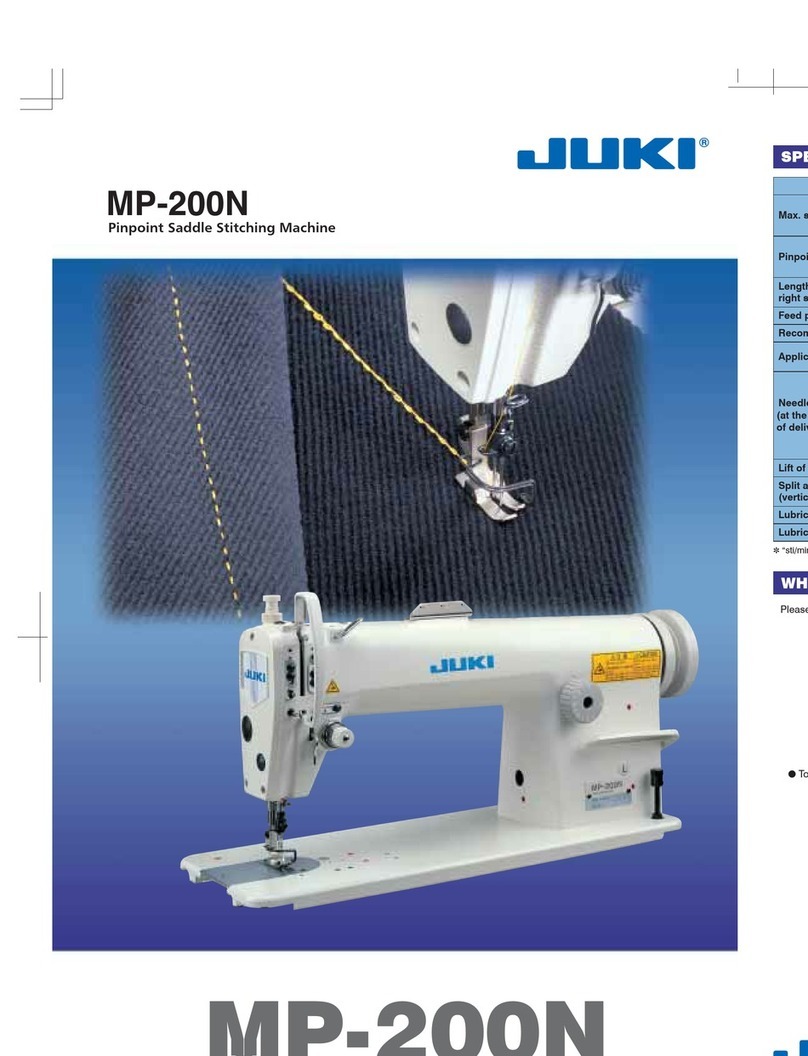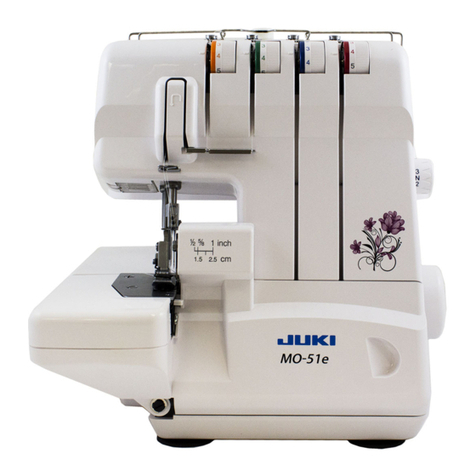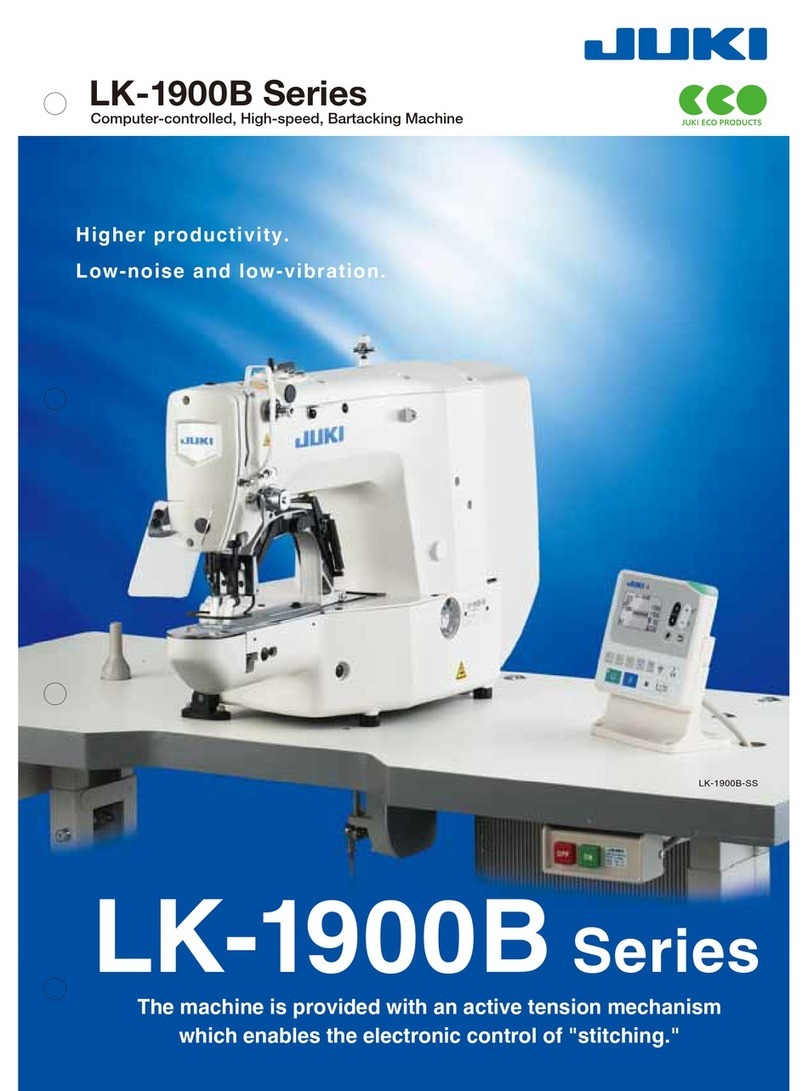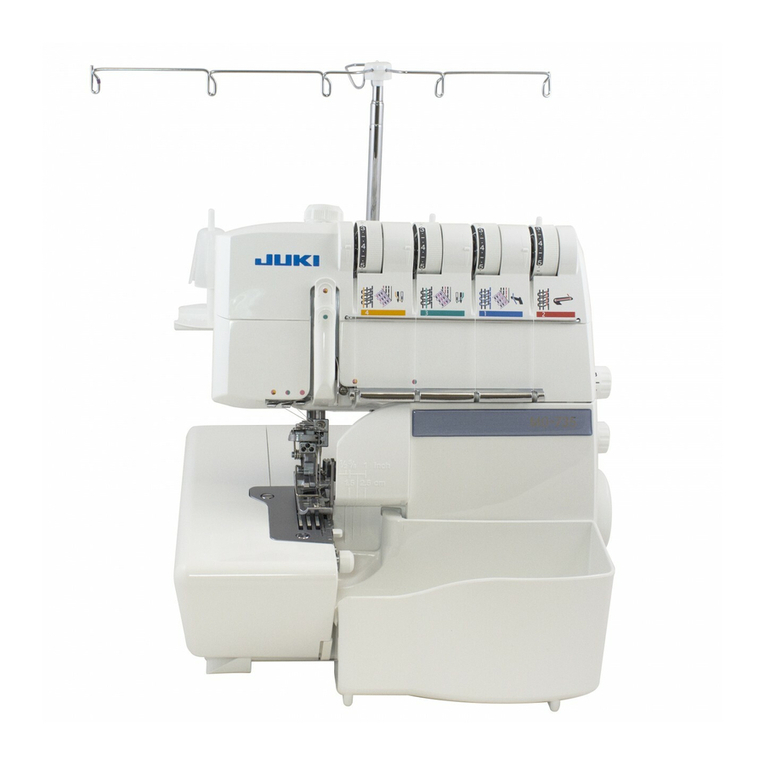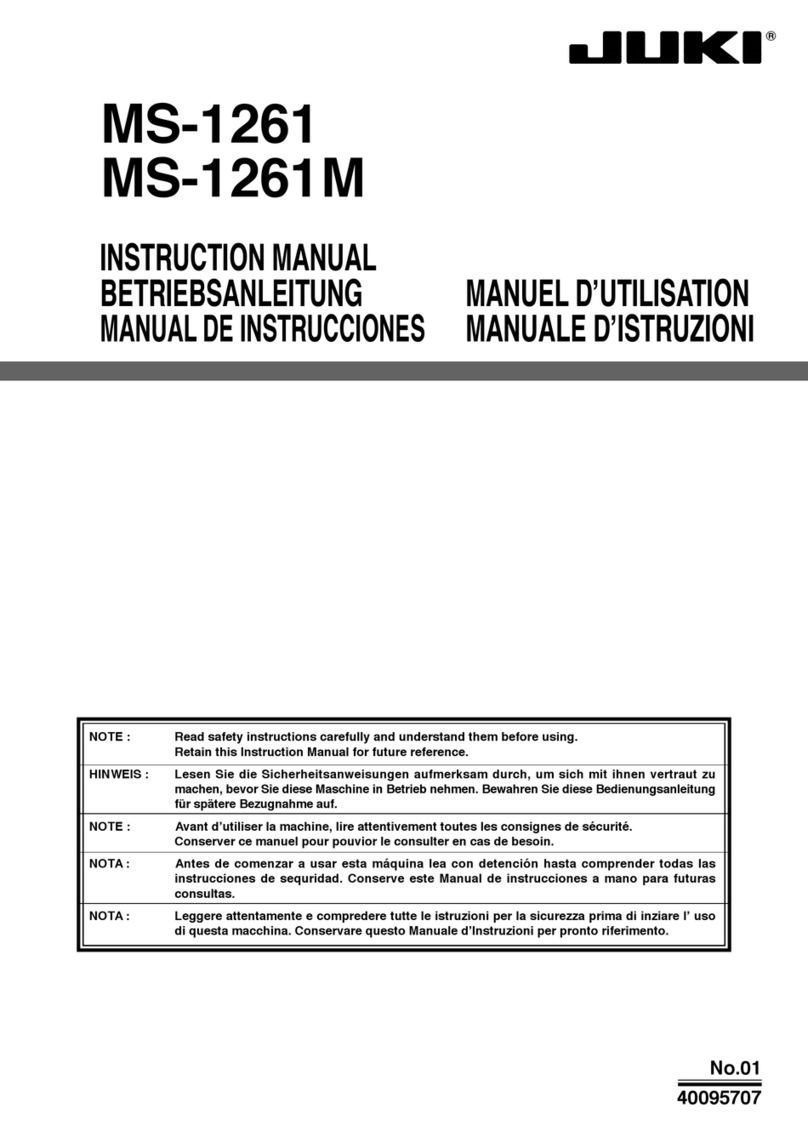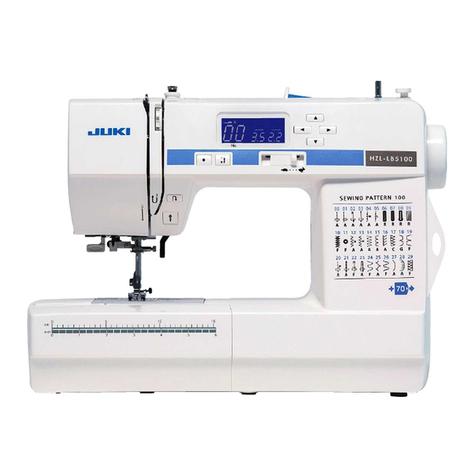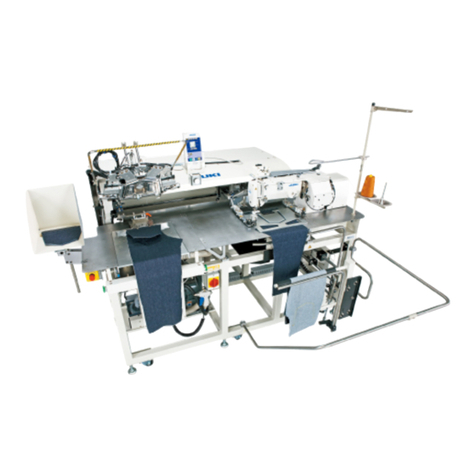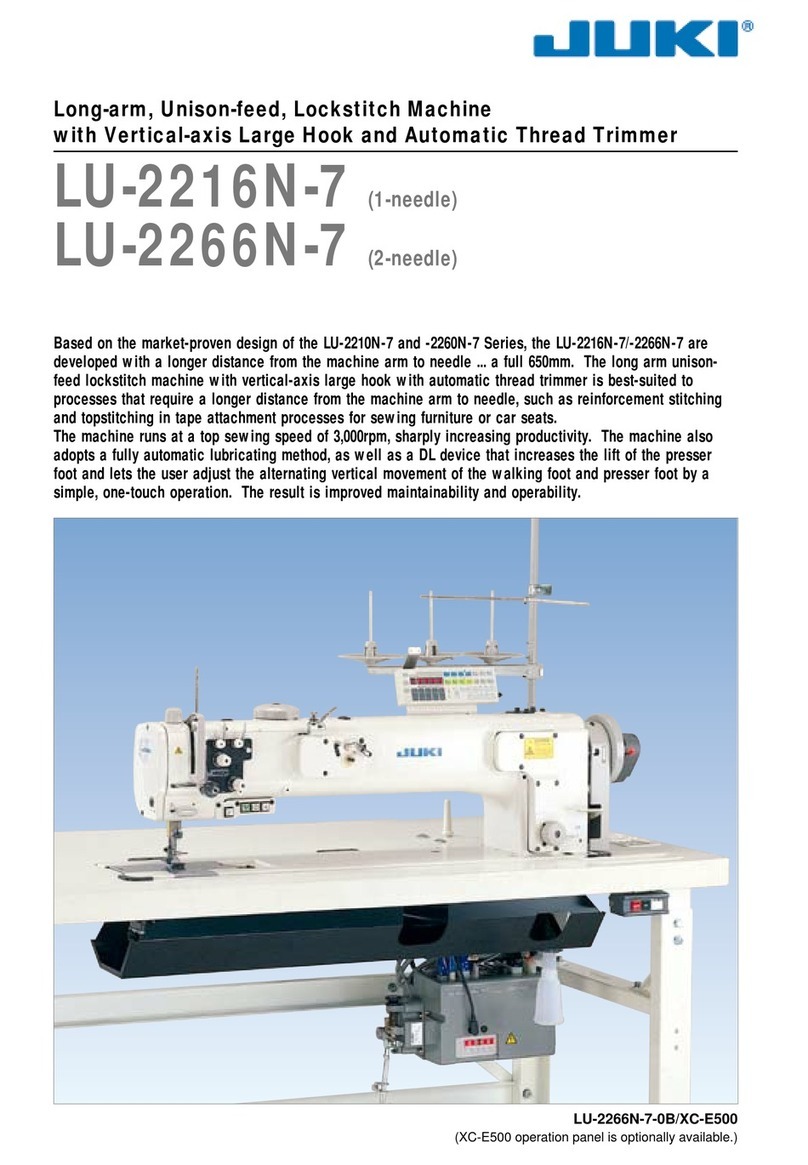
iv
5. Besuretoturnthepoweroffandchecktobesurethatthemachineandmotorcompletelystopbeforere-
movingthebeltcoverandV-beltinordertopreventaccidentcausedbyabruptstartofthemachineormotor.
6. Ifaservomotorisusedwiththemachine,themotordoesnotproducenoisewhilethemachineisatrest.
Besurenottoforgettoturnthepoweroffinordertopreventaccidentcausedbyabruptstartofthemotor.
7. Neverusethemachinewiththecoolingopeningofthemotorpowerboxshieldedinordertopreventre
accidentbyoverheat.
Lubrication
1. BesuretouseJUKIgenuineoilandJUKIgenuinegreasetothepartstobelubricated.
2. Iftheoiladheresonyoureyeorbody,besuretoimmediatelywashitoffinordertopreventinamma-
tionorirritation.
3. Iftheoilisswallowedunintentionally,besuretoimmediatelyconsultamedicaldoctorinordertopre-
ventdiarrheaorvomiting.
Maintenance
1. Inpreventionofaccidentcausedbyunfamiliaritywiththemachine,repairandadjustmenthastobe
carriedoutbyaservicetechnicianwhoisthoroughlyfamiliarwiththemachinewithinthescopedened
intheinstructionmanual.BesuretouseJUKIgenuinepartswhenreplacinganyofthemachineparts.
JUKIassumesnoresponsibilityforanyaccidentcausedbyimproperrepairoradjustmentortheuseof
anypartotherthanJUKIgenuineone.
2. Inpreventionofaccidentcausedbyunfamiliaritywiththemachineorelectrical-shockaccident,besure
toaskanelectricaltechnicianofyourcompanyorJUKIordistributorinyourareaforrepairandmainte-
nance(includingwiring)ofelectricalcomponents.
3. Whencarryingoutrepairormaintenanceofthemachinewhichusesair-drivenpartssuchasanaircyl-
inder,besuretoremovetheairsupplypipetoexpelairremaininginthemachinebeforehand,inorderto
preventaccidentcausedbyabruptstartoftheair-drivenparts.
4. Besuretocheckthatscrewsandnutsarefreefromloosenessaftercompletionofrepair,adjustment
andpartreplacement.
5. Besuretoperiodicallycleanupthemachineduringitsdurationofuse.Besuretoturnthepoweroff
andverifythatthemachineandmotorstopcompletelybeforecleaningthemachineinordertoprevent
accidentcausedbyabruptstartofthemachineormotor.
6. Besuretoturnthepoweroffandverifythatthemachineandmotorstopcompletelybeforecarryingout
maintenance,inspectionorrepairofthemachine.(Forthemachinewithaclutchmotor,themotorwill
keeprunningforawhilebyinertiaevenafterturningthepoweroff.So,becareful.)
7. Ifthemachinecannotbenormallyoperatedafterrepairoradjustment,immediatelystopoperationand
contactJUKIorthedistributorinyourareaforrepairinordertopreventaccidentthatcanresultinper-
sonalinjuryordeath.
8. Ifthefusehasblown,besuretoturnthepoweroffandeliminatethecauseofblowingofthefuseand
replacetheblownfusewithanewoneinordertopreventaccidentthatcanresultinpersonalinjuryor
death.
9. Besuretoperiodicallycleanuptheairventofthefanandinspecttheareaaroundthewiringinorderto
preventreaccidentofthemotor.
Operatingenvironment
1. Besuretousethemachineundertheenvironmentwhichisnotaffectedbystrongnoisesource(electro-
magneticwaves)suchasahigh-frequencywelderinordertopreventaccidentcausedbymalfunctionof
themachine.
2. Neveroperatethemachineinanyplacewherethevoltageuctuatesbymorethan"ratedvoltage±10%"
inordertopreventaccidentcausedbymalfunctionofthemachine.
3. Besuretoverifythattheair-drivendevicesuchasanaircylinderoperatesatthespeciedairpressure
beforeusingitinordertopreventaccidentcausedbymalfunctionofthemachine.
4. Tousethemachinewithsafety,besuretouseitundertheenvironmentwhichsatisesthefollowing
conditions:
Ambienttemperatureduringoperation 5°Cto35°C
Relativehumidityduringoperation 35%to85%
5. Dewcondensationcanoccurifbringingthemachinesuddenlyfromacoldenvironmenttoawarmone.
So,besuretoturnthepoweronafterhavingwaitedforasufcientperiodoftimeuntilthereisnosign
ofwaterdropletinordertopreventaccidentcausedbybreakageormalfunctionoftheelectricalcompo-
nents.
6. Besuretostopoperationwhenlightningashesforthesakeofsafetyandremovethepowerplugin
ordertopreventaccidentcausedbybreakageormalfunctionoftheelectricalcomponents.
7. Dependingontheradiowavesignalcondition,themachinemaygeneratenoiseintheTVorradio.Ifthis
occurs,usetheTVorradiowithkeptwellawayfromthemachine.
8. Inordertoensuretheworkenvironment,locallawsandregulationsinthecountrywherethesewing
machineisinstalledshallbefollowed.
Inthecasethenoisecontrolisnecessary,anearprotectororotherprotectivegearshouldbewornac-
cordingtotheapplicablelawsandregulations.
9. Disposalofproductsandpackagesandtreatmentofusedlubricatingoilshouldbecarriedoutproperly
accordingtotherelevantlawsofthecountryinwhichthesewingmachineisused.
